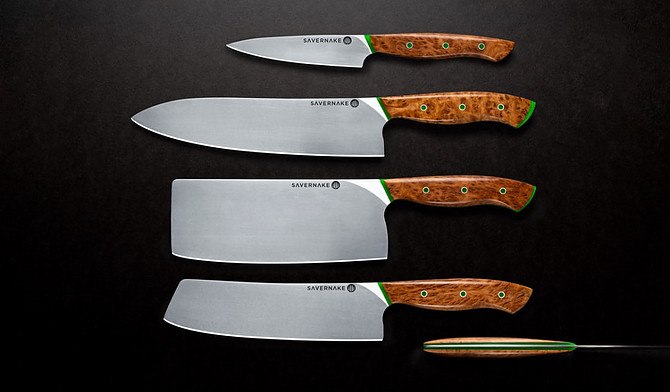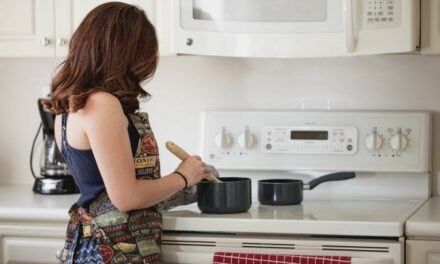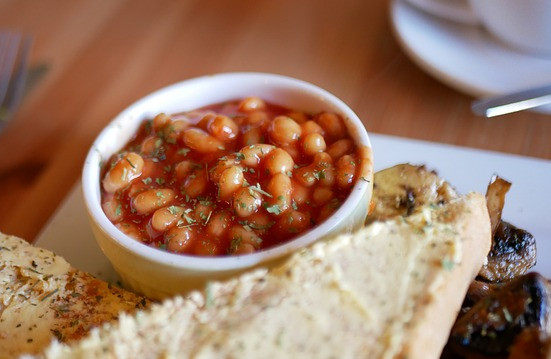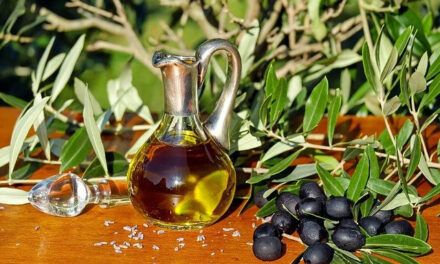It cannot be overemphasized how quickly and easily one can get cut from household tools, especially the kitchen utensils. The risk and consequence of such a cut can be significant if you have diabetes. So, in this article, I look into what you need to know about using knives as a diabetic and the best knives for diabetics.
Knives make up the majority of kitchen utensils that inflicts injuries on its users. These injuries can well be treated and healed in time for some healthy persons. However, individuals like Diabetics require immediate close-up attention for cuts, wound, and even scraps inflicted on them, as these can easily aggravate and advance into something worse.
Diabetics can avoid cuts and wounds from knives by being extremely careful when using knives. They can as well be selective in their use of knives.
There are knives that are best fit for diabetics and some that are too risky for their use. To choose the right and safest knife, one needs to be knowledgeable of the knife parts and the different types of knives.
Let’s start by defining what we mean by a knife.
What is a Knife?
A knife is a sharp tool, device or weapon used for cutting. It has a sharp cutting blade with one or both edges sharpened and a fixed handle.
History of Knifes
The use of knives dates back to a time when there was a need to cut things into smaller bits, which will be as far back as 2 – 5 million years ago.
In the past, the blades of knives were made from sharpened bones, wood and stones, used for cutting, scraping and tearing objects. But modern-day advancement has led to the use of metals in the making of knife blades and the use of wood, plastic or metal for handles.
The modern-day knifes consist of two main parts: the blade and handle. However, there are points and regions within these parts that makes knives very effective in cutting.
These regions include:
- The point
This part being the point at the tip of the blades, is used for piecing and scraping surfaces.
- The edge
This is the region that extends from the point to the handle. It is the cutting surface of the blade.
- The spine
This is the body of the blade, its thickest part. It keeps the tool firm and strong.
- The heel
The heel is the lowest part of the blade and its widest part. It is farthest from the point and closest to the bolster. It aids its user to apply added pressure while cutting.
- The bolster
This is the interval part between the handle and the blade. It is a safe interval between the handler and sharp blades of the knives.
These parts collectively allow using a knife effectively as a kitchen tool, as well as a weapon in war, and as a machine tool.
Types of Knives
The word knife is always expressed as a kitchen utensil because of its major function in the kitchen.
When talking about the different types of kitchen knives, the list is almost endless. It is easier when these types are classified.
Kitchen knives can be classified based on their function and needs in the kitchen. Every kind of kitchen knife has a different look. Each different from the other and each with its own specifications.
The very common knives present in most kitchens include the below.
1. The Chef Knife
The chef knife is a kitchen knife with broad and long cutting blades. It has one straight edge and another sharpened edge with a wide heel from which it tampers up to the point. The chef’s knife is the most versatile type of knife used in all kitchens.
It is very essential to cooks and chefs, hence, its name. It can also be called “cook knife”. It performs all major cutting activities in the kitchen, like in the cutting of bread, meat, fish and vegetables.
Tip: Here’s the Type 2 Diabetes Food List.
2. Utility Knife
The utility knife could be confused for a chef knife due to their similar shapes. However, differing from the chef knife which is broad, the utility knife is slim and small.
The small size of the utility knife provides for a more pointed and sharper knife-tip, and an edge for better cutting. The more precise and little the work is, the better fit it is for a utility knife.
This knife provides a concise cut for smaller kitchen food like carrots and green beans.
3. Paring Knife
The paring knife is a small-sized knife. It is smaller, slimmer and more pointed than the utility knife. It is majorly used in peeling fruits and vegetables like potatoes. Its other functions include activities like slicing, cutting, trimming and chopping.
It has the advantage of being handy and maneuverable, as it is light-handed.
Types of Knives Based On Their Function
1. Bread Knife
The bread knife is quite different from the regular structure of a knife. Its blade is long with a blunt straight end and a sharp saw-toothed edge. It is a long knife without a sharp point or knife-tip. Its point is curved and leads to the serrated blade edge. Its structure is suited for its function.
The saw-toothed edge allows it to slice through all bread type without crushing it.
2. Meat Knife
There are different types of knives used for cutting meat, some of which are used only by butchers and others found in regular kitchens.
The Chef knife, as a very versatile knife, can be used in cutting meat. However, some knives are made specifically for the purpose of cutting, chopping, slicing and boning meat.
They include:
- Boning knife
This type of knife has a long, thin blade with a sharp point. It is used in peeling meat out of its bones. It could bone all types of meat, from beef to chicken or pork.
- Butcher knife
This is not a very common knife seen in all kitchens. It has a very broad blade, with a straight point. It is used for chopping meat off the animal carcass.
- Slicing knife
The slicing knife is a long, thin knife with a pointed tip. Its point could also be round. It functions as its name implies.
The utility knife is also suitable for slicing meat and fish.
3. Vegetable Knife
These are usually small knives with longer handles than blades. Examples of these knives include;
- Pruning knife
The pruning knife is well recognized by its curved tip/point. The shape of its blade allows for the harvesting of vegetables and herbs from the garden. It is as well effective in the peeling of fruits.
- Peeling knife
It can be called a Turning or Tourne knife. Its blades are short and can best be described as a “bird’s beak”.
This knife makes a clean and precise cut on a rounded fruit (e.g. avocado) or vegetable, making it the ideal knife for peeling.
The Paring knife and Utility knife is also a vegetable knife.
4. Cutlery Knife
This is the regular table knives for eating meals comfortably. The most common cutlery knife is the Dinner knife
used to eat all meals at any time of the day.
Cutlery knives could be more specialized, as they may be used for cutting meat, fish or just to butter one’s bread. An example is the Steak knife. This knife has a serrated edge, which allows for cutting steaks into smaller bits. Another example is the Butter knife.
Your safety in the kitchen is important, and here are some safety tips for you.
Why Should Diabetics Be Careful When Working With Knives?
James L. Roth, a physician from Johns Creek, GA., highlighted the importance for diabetics to protect themselves from cuts and wounds. To prevent complications and for a faster healing process, James L. Roth said that any cut or wound
on the skin must be clean, covered and well monitored.
The healing process in diabetics is greatly affected by their condition. Diabetes is the condition of retaining excess sugar in the blood due to the body’s inability to convert sugar to energy. A few features of the condition progressively leads to the decline of the healing process in a diabetic.
They include:
1. Excess blood sugar
Sugar from food cannot be converted by organs in the body and thus are retained in the blood. Excess sugar in the body is dangerous as it can lead to the destruction of different body organs like the retina, kidney and even the nerves.
2. Destruction of nerves, otherwise called Neuropathy
Neuropathy is the destruction of nerves which results from the presence of excess sugar in the blood. Loss of sensations from loss of nerves will increasingly lead to loss of a feeling of pain when injuries are inflicted. Injuries as little as insect bites, scrapes and cut, due to loss of sensation, will begin to advance into something worse and they will remain oblivious of it.
It is for these reasons that doctors’ advice diabetics with neuropathy to regularly monitor their skin for cuts, scrapes and any wound.
Places out of the reach like the below the feet, which cannot be monitored must be highly protected from anything that might cause injury by wearing good-fitted footwear at all times.
3. Blood circulation
For a diabetic, normal circulation of blood is impaired, as excess sugar in the blood has limited the amount of oxygen reaching wound sites and thus, the wound healing process is as well impaired.
The fight against the wounds by white blood cells is also weakened by the limited amount of nutrients reaching the wound site. This is the factor that prolongs the healing of a simple wound. This means that wounds of a diabetic must be regularly cleaned, even as the healing process is slow, so as to prevent infections from worsening the injury.
4. A decline in the immunity
The immune system is responsible for fighting infections and restoring skin health from injuries.
For a diabetic, the restoration of skin from wounds is almost ineffective due to a decline in the body’s immunity. Research has suggested that this decline in immunity is as a result of specific enzymes and hormones produced by the body in response to the high sugar level in the blood, as these enzymes affect the efficiency of the body’s immunity to diabetic healing.
Once a wound is sustained and not treated properly, it can usually result into chronic inflammation, where the normal process of inflammation in wound healing is lost, and the wound stops healing.
An infection could also be the result of a not properly monitored wound. When an infection is so bad in a wound, it could lead to a loss of limb, which is known as amputation.
Wound healing thus in a diabetic, is slow, difficult and very dangerous. It is therefore very important for as diabetic to avoid wounds by wearing protective covering around a prone body part, and being very careful when working with dangerous objects and decisively selective as to what sharp object to use for essential purposes.
How to Select a Safe Knife for Diabetics?
All knives are dangerous and can cause injury at any time. However, there are some that are relatively safe for diabetics trying to avoid any accidental cuts.
There are a few factors to consider when selecting a good knife.
1. To select a good and safe knife, one must consider the structure of the knife.
The structure of a knife part is a great determinant of how safe a knife is. A knife basically has 2 parts: the blade and the handle and 4 regions as discussed earlier on.
The design of each part and region is very important. The point, being the piercing region of the blade could be extremely dangerous to handle. Thus, in the selection of a good and safe knife, the point is one place to consider, as the safest points are those which are less pointy and/or less curvy, with the chef’s knife as the best example.
There, the edge of a knife is usually sharp, one can only be careful when handling this part. The heel and the bolster are the point of the blade that are majorly built to enhance safety. Thus, a good knife must have a well-enhanced bolster.
2. The kind of knife also determines how safe it is.
There are two kinds of a knife: Forged knife and Stamped knife.
The forged knife is made from a single metal piece. This metal piece is used to make both the blades and the handle as a single and continuous tool.
The stamped knife, on the other hand, is made by cutting out a knife-shaped piece of metal to make blades, with added finishing to the tool.
Of both, the forged knife is considered safer for use. The forged knife is also very strong and better lasting, which further increases its benefits over the stamped knife.
3. Knife handles is also important in choosing a good knife.
The handle of a knife must be built to ensure maximal safety to its user.
It should be noted that the selection of a good knife must be based on the specific use of the knife. If the knife is for slicing or bread slicing, then the best knife is those made for that specific purpose or those generalized knives.
How to Use a Kitchen Knife Safely – Tips For Diabetics
Even the safest selected knife could cause injuries.
The following are safety tips on knife use for diabetics in a kitchen.
- Use of protective equipment
Handling knife involves both hands, the knife hand wielding the knife and the non-knife hand on the surface of what is being cut.
It is ideal for the non-knife hand to be always protected with cut-resistant or mesh gloves.
- Cut on a stable surface
Food must be cut on a chopping board, or a flat and stable surface.
- Avoid using the wrong knife for any task
Some knifes are made for a specific task, and its use wrongly will cause injury to its user.
- When handling a knife, one must always be careful.
Not only when you using the knife, but also when you washing a knife or moving it for storage, you should handle it with care.
- Knives must always be stored in a secure and closed place.
For example, it must not be left on the table or kitchen counter.
- Always carry a knife with the blades pointing downwards.
The Best Knives for Diabetics
The best knives for a diabetic is those with a lower risk of causing injuries to its users.
On the contrary, one quality of the best knife for a diabetic is a sharp blade. A blunt blade will demand for more force and pressure in cutting, which can cause accidents in the kitchen, thereby injuring the user/others in the kitchen.
The following are the best knives a diabetic must have:
- The Chef’s knife
The first of the best knives for a diabetic is the chef knife. Its structure, as was described above, is a safe enough knife for a diabetic. It is a must-have for a diabetic because of its diversity in function.
As safe as it, it could be used to cut vegetables, peel fruits and even slice meat.
Tip: Did you know the effect of Cauliflower on diabetes?
- The Paring knife
The paring knife is light-handed and allows its user to give a quite precise cut. It gives its user maximum control over the blades and thus prevents injuries. A paring knife because it’s light, won’t easily slip off the hand. Hence, it is a good knife for a diabetic.
- The Dinner knife
For eating, the best cutlery knife is the Dinner knife. Among other cutlery knives, the dinner knife is the most conventional. It is handy and durable. It has a moderately sharp edge that doesn’t often inflict injuries.
- Bread knife
This is an essential knife for cutting bread, so thus, it is important to a diabetic. However, the chef’s knife is effective in slicing bread too.
Conclusion
The best solution to healthy skin for a diabetic is the regular inspection of the skin and avoiding objects that cause injuries. The knife, being a very dangerous but yet important tool can be handled carefully and selectively by a diabetic in order to maintain good and healthy skin.









